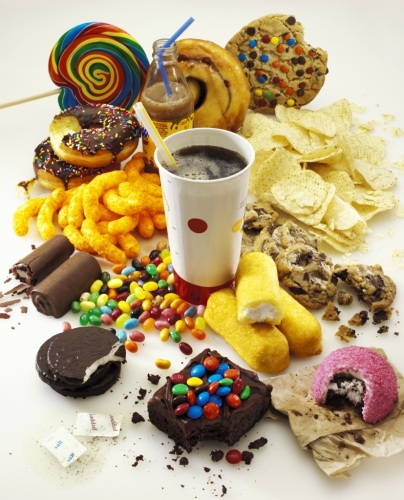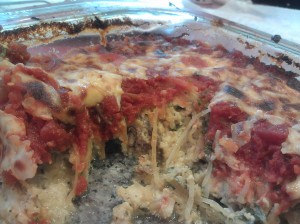I took a big step for health this week. After a fairly relaxed summer and an extra five pounds of vacation bloat, I spent the money on a Resting Metabolic Assessment and an hour-long session with the nutritionist at my gym. She used the test results to give me a very accurate nutrition plan catered specifically to my body. The purpose of this post is educational. My test results and nutrition plan are for me, but I welcome you to steal ideas from them and try them out.
The Resting Metabolic Assessment (RMA)
This was a simple, painless procedure. The trainer had me sit reclined in a comfy chair for 30 minutes and listen to my audio book while breathing into a mask. The mask had hoses that were hooked up to a machine which was attached to a lap-top. The machine measured how much oxygen and carbon dioxide I was exhaling and, using magic, used those ratios to determine very accurately how many calories my body burns at rest and how much fat I burn compared to sugar.
He printed the information and explained it to me. Of all the calories my body burns at rest, 73% are from fats and 27% are from carbs. That’s really good; normal people burn 60% fat and the optimal is 80%, so I’m doing pretty well. This means I should be able to lose weight pretty easily.
At rest, my body burns 1,456 calories per day- not including the calories burned digesting food or moving around during the day. It was estimated that I burn an extra 437 a day doing my daily activities, and so my total daily calorie burn is 1,893, not counting exercise.
Even after he talked me through the test results, it still sounded like French until I had my one-on-one with the nutritionist.
The Nutritionist
My nutritionist has a background in competitive body building and all sorts of degrees and certifications in health and nutrition. At first glance, I was a bit intimidated by her great muscle tone at 8 months pregnant, but I quickly relaxed at her cheerful demeanor. I believed her when she said she knows how to be healthy- I would have never guessed she was old enough to have a 19-year-old at home.
She very patiently listened to my goals and questions, and using the RMA results, formulated a plan just for me.
My Goals
-Lift heavy four days a week, cardio two days
-Get my nutrition balanced in preparation for pregnancy
-Have a nutrition plan for when I am pregnant
Notice I’m not actively trying to lose weight. I’m just going for optimal health. A slow weight loss will be a part of achieving good pre-natal health, but there’s no need deplete my body to lose weight.
My Plan
The nutritionist looked over my test results and explained that since I work out six days a week, my daily calorie goal will be what the test said (1893) and not to add calories to make up for exercise. She also looked at my fat/carb-burning ratio from my RMA and recommended my macros. Macros are the ratio of Macro-nutrients that should be in your diet. So, she said I should be getting 40% of my daily calories from protein, 35% from carbs, and 25% from fats. That comes out to about 190g of protein, 166g of carbs and 53g of fats every day.
Because my goals were for general health and not necessarily weight loss (which will be a happy side effect) my nutritionist said I can change my macros based on how my body feels. I can come down to 144g of protein if I need to increase my carbs.
She mentioned that I should try to get more fiber than sugar every day- which is actually pretty hard to do. I can have up to 60g sugar, but 30g is ideal. She recommended I increase my vegetable intake to at least seven servings a day. One serving of veggies is 1/2 cup if they’re cubed, or one cup if they’re leafy veggies.
She also said I should stick to protein and fat for breakfast and save the carbs and sugars for after my workout. She said my body will burn fat for fuel until I trigger my insulin by eating carbs or sugar, so I should wait on the carbs until lunch. A perfect breakfast would be a protein shake with almond milk, nut butter, chia seeds and spinach.
After talking about my workout routine, she suggested I may be over-working and instead of filling my whole 2-hours every day, to listen to my body and quit when I feel like I’m done. If I feel like I’m not recovering as fast as usual, she even said it was ok to take an extra rest day on top of my Sunday.That will keep me from depleting myself as well as keeping my hormones balanced. Apparently- and this was news to me- the way you work out and the food you eat can have a big impact on hormones, which can have a big impact on getting pregnant. She even prescribed de-stressing and using the sauna every day (unless I am pregnant, then forget it) and most importantly, getting enough sleep.
The last thing we covered was the supplements I should be taking, both for weight lifting and for baby-prep. First was a pre-natal with extra folic acid and DHA. Next was magnesium and chromium for strength and insulin regulation. Then, fish oil, which I’m to take two capsules in the morning and two at night. Also calcium, because women need calcium, especially weight-lifting women, especially-especially if they’re pregnant weight-lifting women. She said I can have as much protein powder as I need to achieve my macros every day, as long as I’m also eating real food, and may continue even when I’m pregnant. Lastly, she suggested I start drinking BCAAs, which are amino acids rather than the full protein molecule, during my workouts.
Conclusion
If you’re anything like me, you’ve tried lots of diet styles and have a hard time figuring out what your body really needs. I recommend getting a certified nutritionist and any testing, RMA or lab tests, that you need to find out what your body’s story. Your body is different from every one else’s; a diet that works great for one person will cause another brain-fog and fatigue.
My personal diet breaks down to this: Get at least 144g protein. Get at least seven veggies a day. Be careful with carbs and sugar. If I can follow those things, everything else falls into place.
And, because I can’t post about health without a pic of my cluttery bathroom, behold, my guns:



